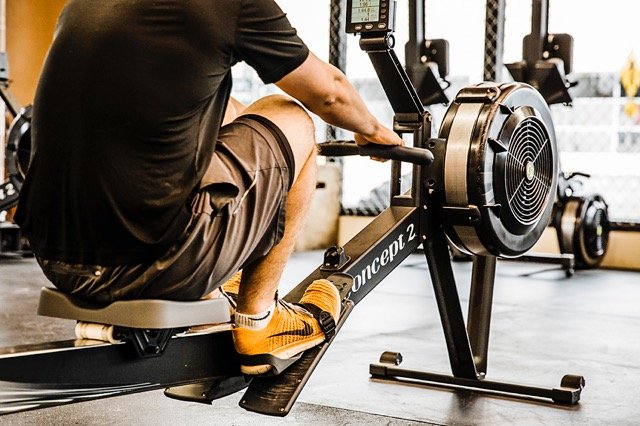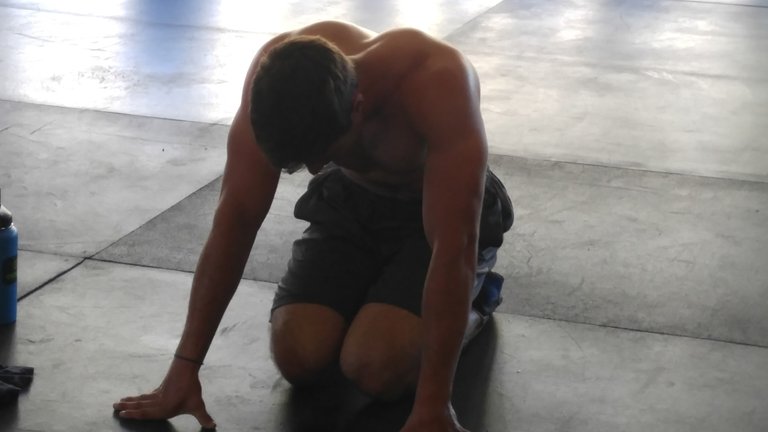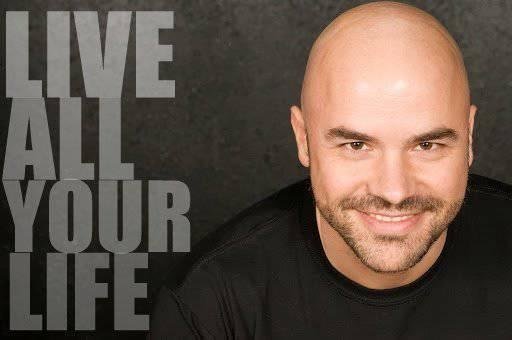In 2002, Greg Glassman published his eloquent summary of what it takes to develop a high level of overall fitness and health.
He summed it up in 100 words. I thought it would be fun to take these components and flesh them out a bit.
In case you missed part one, I gave some food for thought about nutrition that you can read here.
In this second installment, we’ll take a look at the types of exercises prescribed and some of the reasoning behind this recommendation.
“Practice and train major lifts: Deadlift, clean, squat, presses, C&J, and snatch. Similarly, master the basics of gymnastics: pull-ups, dips, rope climb, push-ups, sit-ups, presses to handstand, pirouettes, flips, splits, and holds.”

Nothing surpasses the barbell for eliciting strength. Many training methods are sold as being the end-all-be-all of fitness. Some people say you can get as strong as you’ll ever need through Yoga practice. I’m not ani-Yoga, in fact I’m an advocate for it, but not for strength. If you expect to be able to manage external objects effectively, you need to train to manage external objects. Whether it’s a bag of mulch for your garden or pushing a stalled car out of a dangerous intersection- even the most intense bodyweight training won’t prepare you to move weight as well as training with weight.
But, isn't some of this dangerous?
When selectorized machines began to take over the gyms in the 70’s, any training requiring skill began to lose favor for the general public. The people selling these machines were obviously incentivized to downplay the classic fitness methods in favor of their latest gadget. Barbells were rumored to be dangerous, and basic gymnastics were something for little kids or career gymnasts. The truth is that even with a cursory understanding of barbell safety, proper positioning, and efficient movement, the barbell is not only safe but in fact, will help you to reduce repetitive use injuries that may occur with long-term use of redundant selectorized machines.

Skill is a part of fitness. When we train with free-motion external objects such as barbells, dumbbells, sandbags, and kettlebells, we are learning to manage our natural environment. Practicing basic gymnastics (we'll just classify any functional bodyweight exercise as "gymnastics"), you'll acquire balance, coordination, flexibility, and stability that you simply will never obtain with selectorized machines.
“Bike, run, swim, row, etc, hard and fast.”

Another trend of the 70’s was the popularization of Jogging (by the way- jogging as a routine has the highest rate of injury of any sporting pastime. Strange but true). Again, I have nothing against training to run long distances. Especially if it’s your sport or you find enjoyment in that mode of training. But Long Slow Distance (LSD) training is not the end-all-be-all of fitness either. In fact, it can be detrimental to many aspects of your health.
More miles on your car makes it depreciate for a reason. It means more wear and tear. The same holds true for your body. Short-duration, high-intensity training like sprints and intervals have been shown to provide much more bang for your buck than long slow distance training. You still get the cardiovascular benefits, with less volume (less wear and tear on your body), and you get additional benefits of retaining more lean muscle and bone density.
Your body and mind adapt to the specific exercises that you do. Training an excess of “cardio”, can make you better at doing cardio but hinder other important aspects of your health such as strength and balance. So if your goal is to run long distances, then, of course, you should be training for that. But if your goal is overall fitness and health, you may need to lay off the long slow cardio- and start sprinting instead.
“Five or six days per week mix these elements in as many combinations and patterns as creativity will allow. Routine is the enemy. Keep workouts short and intense.”
As I mentioned above, you adapt to the types of training that you practice. I know that seems like an obvious statement, but there is often a disconnect in the way people work out, and the way they want to function in their day-to-day lives. Doing leg extensions and bicep curls on selectorized machines will have a limited effect on your ability to hike a local trail or keep up with your grandkids (or future grandkids).
In order to prepare for the variety of life, you should mix up your training as much as possible. Improving your health across a broad spectrum of attributes requires a broad and inclusive approach to fitness.

One note about the controversy of this philosophy:
I’ve been very careful to illustrate the intention of this fitness prescription: overall health and wellness at a high level.
If you're an athlete preparing for a specific sport- this prescription can provide a base of fitness from which to build, but you will need to train specifically for your unique goals. There are many critics of this method who want to site a “loss of strength” in comparison to specific strength training, or a “loss of endurance” as compared to specific distance training. These critics are missing the point that the general public (most likely you and me) are seeking a general well-being.
We want to feel good.
We want to be confident and capable.
We want to look good naked.
We want to live life to the fullest.
These are the “specific” adaptations of a general fitness program that includes efficiency, intensity, and variety of functional movements. When you consider the far-reaching effects possible with this type of training, taking the time to learn the necessary skills seems a small price to pay.
In the third and final part of this series, we'll look at the most neglected aspect of this CrossFit Prescription. Stay tuned!
This post is my original work, written for InSync.fit .

Hello!
My name is Cody Limbaugh. If you liked this, you might also like my other content.
I write for 5 different blogs. To keep up with the best of my work, contact me directly, and get exclusive content: hit the red button to subscribe to my free weekly update:
 Live All Your Life is a project of discovery. My aim is to live with intention, to get the most out of life, and to share my discoveries with you.
Live All Your Life is a project of discovery. My aim is to live with intention, to get the most out of life, and to share my discoveries with you.
Providing value is important to me, so I often write about techniques that I've found to work well in my life.
I think having rich experiences is a critical component of living well, so I often share my travels.
It's important to me to develop a deep sense of curiosity and relentless personal development, so I also write about learning and various topics and skills that I'm currently working on.
I've been a fitness coach for the past 13 years. I now write for three fitness sites.
I believe that authenticity is critical to living a good life, so I strive to rise above cultural norms and expectations.
That is great post. I think like you. I am constantly researching. I recommend compound exercise. I think working with free weights is better for the body. I hope I don't think it's wrong.
You're right on track. It makes sense that to train for health, we should train in the most natural way possible. Compound movement is how we naturally function, so that's how we should train to be more functional !
Thank you for taking the time to read and comment.
you're welcome